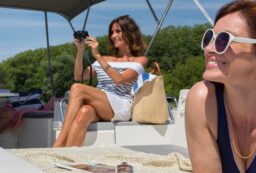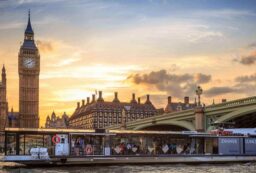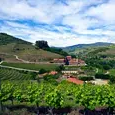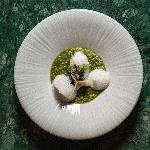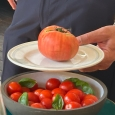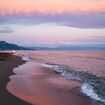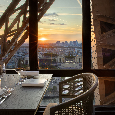
By Susan Kime
River cruising, particularly in Europe, offers the pursuit of human enlightenment from new experiences with nature and culture. Aboard Viking River Cruise’s route down the Elbe, guests feel the anticipation of seeing historic places as part of their extensive array of memorable and educational cruises.

Viking River Cruises don’t only stop in historic places; they also open doors to less traveled places previously only known to most seasoned travelers and tour guides. It is these hidden gems that are often the most memorable. Along one of the lesser-known European rivers, whose distant origins lie in the Krkonoše Mountains, near the border of the Czech Republic, the Elbe flows 678 miles through the Czech Republic, Germany, and into the North Sea, and those onboard the cruise see central European destinations that have bright as well as dark historic relevance. Aboard an often foggy, sinewy waterway in the autumn months, the cruise guests are wide eyed pilgrims – ready to see, then exchange ideas about these cities on or near the Elbe.
Prague

Prague is the first port of call. It lies on the Vltava river, an Elbe tributary. The Vltava is also called the Moldau, and for those who know classical music, this river was the inspiration for Smetana’s symphonic poem of the same name. The Moldau flows under Prague’s famous Charles Bridge, Prague’s oldest, begun in 1357 and completed in 1402. Built from sandstone blocks and flanked at each end by fortified towers, the Charles Bridge is the most important connection between Prague Castle and the city’s Old Town and adjacent areas. And for spiritual décor, 30 Baroque statues of saints line the bridge, all created in the 17th century and beyond.

The bridge defines how past and present meet and meld on the Elbe. One may look up at the Saints, then down on the bridge, knowing that notable writers and artists, either born or studied in Prague, walked that same route – Franz Kafka, Egon Schiele, Alfons Mucha, Antonin Dvorak, Vaclav Havel, Milan Kundera, Rainer Maria Rilke, and others. This awareness makes the blended experience of sky and land, of heaven and earth, of past and present, all the more striking, this time under the pink clouds of sunrise and accented by the lively slap of the cold river winds.

Over the bridge and into the old town square is another historic dimension. The Prague Astronomical Clock, on the wall of the old town hall, is composed of three parts. First, the astronomical dial represents the position of the sun and moon. Second, ‘The Walk of the Apostles’ is an hourly, moving depiction of the Apostles, with a skeleton to symbolize death, which strikes the time. Third, a calendar dial is embellished with medallions to represent the months. The oldest part of the clock dates back to 1410, as the first recorded mention of the clock was on 9 October 1410. Tempus Fugits!
"River cruising, particularly in Europe, offers the pursuit of human enlightenment from new experiences with nature and culture."
Terezin

At the next stop on the cruise, guests can rejoice at seeing the quaint city of Litomerice, where there is beer sampling or traveling to a Jewish ghetto and concentration camp called Terezin, on the outskirts of Lito. At Terezine, there is sadness, anger, and the feeling that troubled spirits still live there in isolation rooms, in the tunnels, and at the vast cemetery where the Christian cross and the Star of David quietly co-exist. A cold wind blows dust in and around the grounds – ghostly reminders of the German dark days of World War II.
Meissen

Upon leaving Terezin, guests know happier times await. Because, for the many who love to drink from beautiful porcelain cups, Meissen is the town they are anticipating. Founded in 1710, Meissen Porcelain is considered the ultimate symbol of luxury, and traveling to the Meissen Porcelain Manufactory, is a joyful encounter. The manufactory includes an art studio, a Privé room for high-end sales and consultation with Bach’s music playing the background. The restaurant, where only Meissen Porcelain is used, is a lesson in porcelain luxury, where each Blue Onion dinner plate lingers upon the mind. “A thing of beauty is a joy forever.” said John Keats, a great Romantic poet. He was probably right, especially when it came Grecian Urns and Meissen porcelain.
Wittenberg

Another anticipated stop is Wittenberg, as it was on Halloween 1517 in Wittenberg that Martin Luther tacked his 95 Theses of Contention on the church door of the Wittenberg Cathedral, accusing the Roman Catholic church of heresy, and thereby starting the Protestant Reformation. The ensuing religious revolt broke from the Catholic Church, and allowed the Protestant faiths to grow and thrive. Many on our cruise will be deeply moved by standing at the gravesite of Martin Luther and seeing a fresh rose on the grave, a remembrance for a man whose religious ideas changed everything.
Potsdam

In Potsdam, the famous Sanssouci Palace is the former summer residence of Frederick The Great, King of Prussia. He wanted to cultivate plums, figs, and grapes in this area, so, in 1744, he had a terraced garden designed for his summer palace. Frederick is buried on the property, and on his grave, they placed fresh potatoes. Next to him are eleven gravestones, so old the names cannot be seen. The guide explains that Old King Fritz introduced potatoes to Prussia, for which the often-hungry populace was so grateful, and those eleven graves were those of his Italian Greyhounds, who he loved more than anything – even his wife is buried elsewhere.

If there is a guiding principle to traveling on the Elbe with Viking Cruises, it may be the awareness of these dark and light threads of European history. Each is illuminated by the diverse destinations on this river cruise. Those guests who see the skeleton on the Prague Horological clock, after walking on the St. Charles Bridge, and those that stand near the stone graves of Terezin, then the church grave of Martin Luther, and finally look over the grave of Frederick, with his greyhounds and potatoes, will feel moved by the lessons of the living past.







